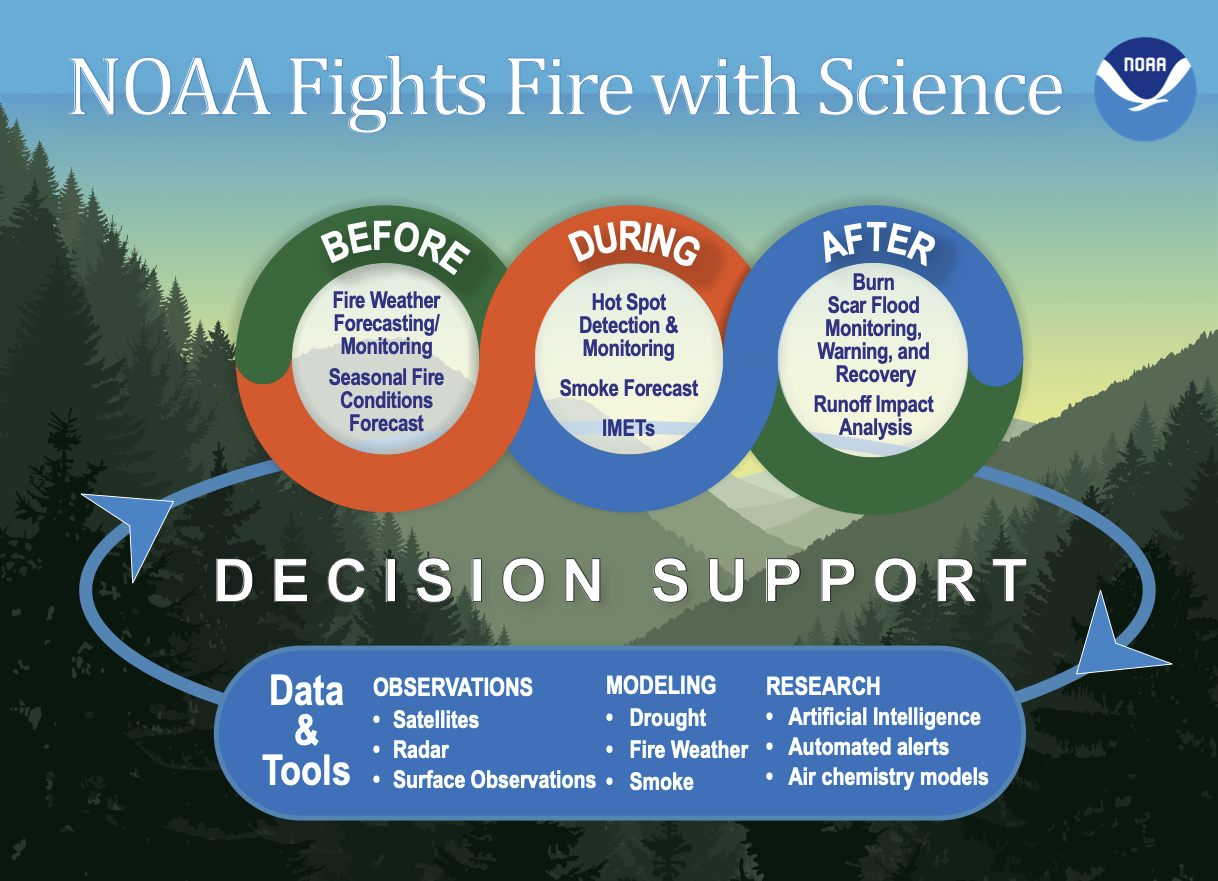Rising temperatures, declining snowpack and frequent droughts are all leading to a dramatic surge in wildfire frequency and severity across the western United States. Climate change is loading the dice, transforming what was once a natural, cyclical and seasonal visitor on the landscape into an omnipresent threat. Year after year, fire is filling western skies with smoke, converting live timber and understory vegetation to burn scars, impairing water supplies, disrupting economies, threatening lives and property, and altering the landscape for generations.
How NOAA supports wildfire science and response
NOAA’s engagement with wildfire is comprehensive. As the nation’s leading weather and climate science agency, NOAA provides critical outlooks, forecasts and early warning products, monitoring temperature, precipitation and soil moisture across the nation. NOAA satellites spot new ignitions with sophisticated instruments and track the growth of fires and movement of smoke across the country. NOAA’s National Weather Service provides critical fire weather information to wildfire managers and communities — dispatching specially trained meteorologists to incident command centers for real-time, site-specific forecasts. Meanwhile, NOAA scientists are developing new tools, technologies and integrated systems to improve the accuracy of outlooks and forecasts, assist local decision support and communicate vital public safety information faster and farther.


